Textile inspired artist Reineke Hollander creates paintings, sculptures and assemblages using objects to preserve the memories and stories that go along with them. Very often these objects are fragments discarded by others and found on the streets of a city or on a beach, picked up in markets or donated by others. She is always on the look out for ‘found’ fragments that she can use; by doing this she sustains their life in a different form.
Here Reineke explains why she has always felt her work doesn’t fit under the traditional definition of textile art and gives us an insight into her uncoventional way of working.
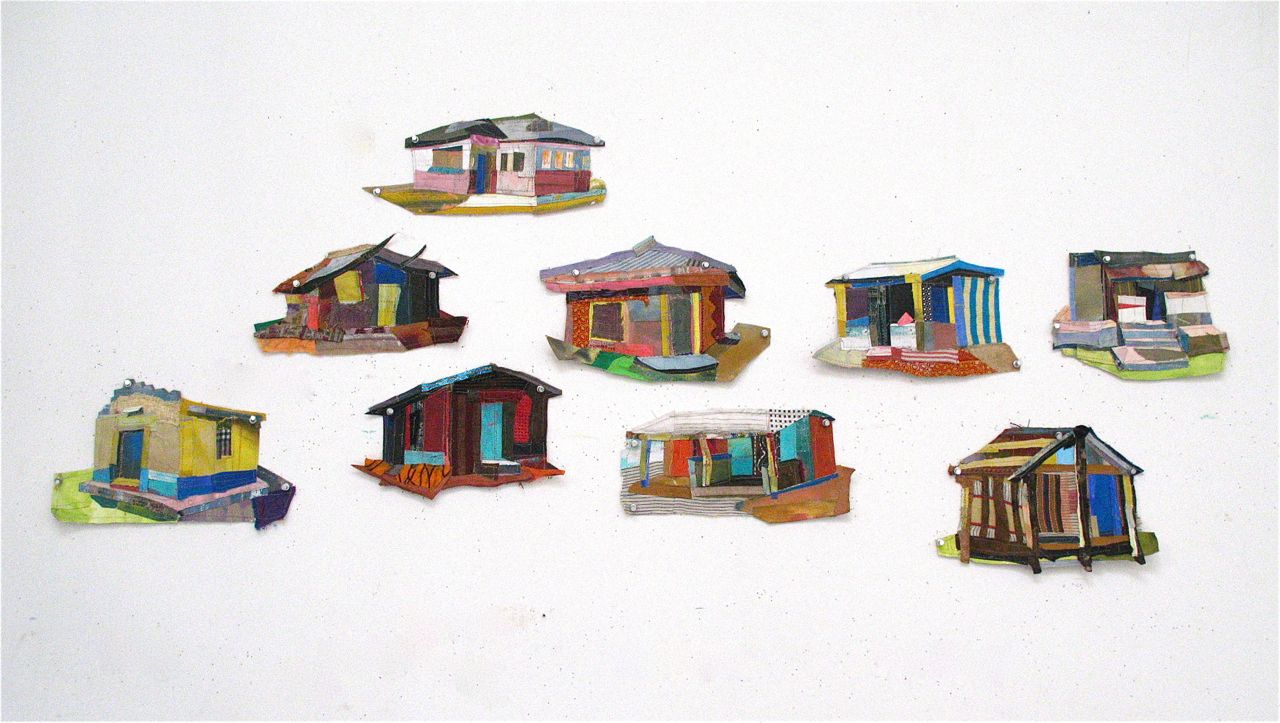
Clothing, tapestry, shelter
TextileArtist.org: What initially captured your imagination about textile art?
Reineke Hollander: It is textiles themselves I am fascinated by. I have always collected them, especially ‘used’ textiles. Apart from the obvious (texture, colour, pattern) there is something absolutely basic about them. Clothing. Tapestry. Shelter. What I like about them is the ’used’ qualities; they carry stories, they have been somewhere else before.
Memory and the passage of time are the main themes of my practice as an artist. Preservation of those stories, not the grand narrative of history, but little individual stories, put them in a new context. They help me to create textile inspired art. In particular I like African fabrics. They often seem improvised, but turn out ‘just right’, with everything, every little repair or ‘mistake’ exactly where it should be.
What or who were your early influences and how has your life/upbringing influenced your work?
A sense of helplessness in the face of loss, senseless loss, in particular the Holocaust (I was born in the Netherlands right after World War II).
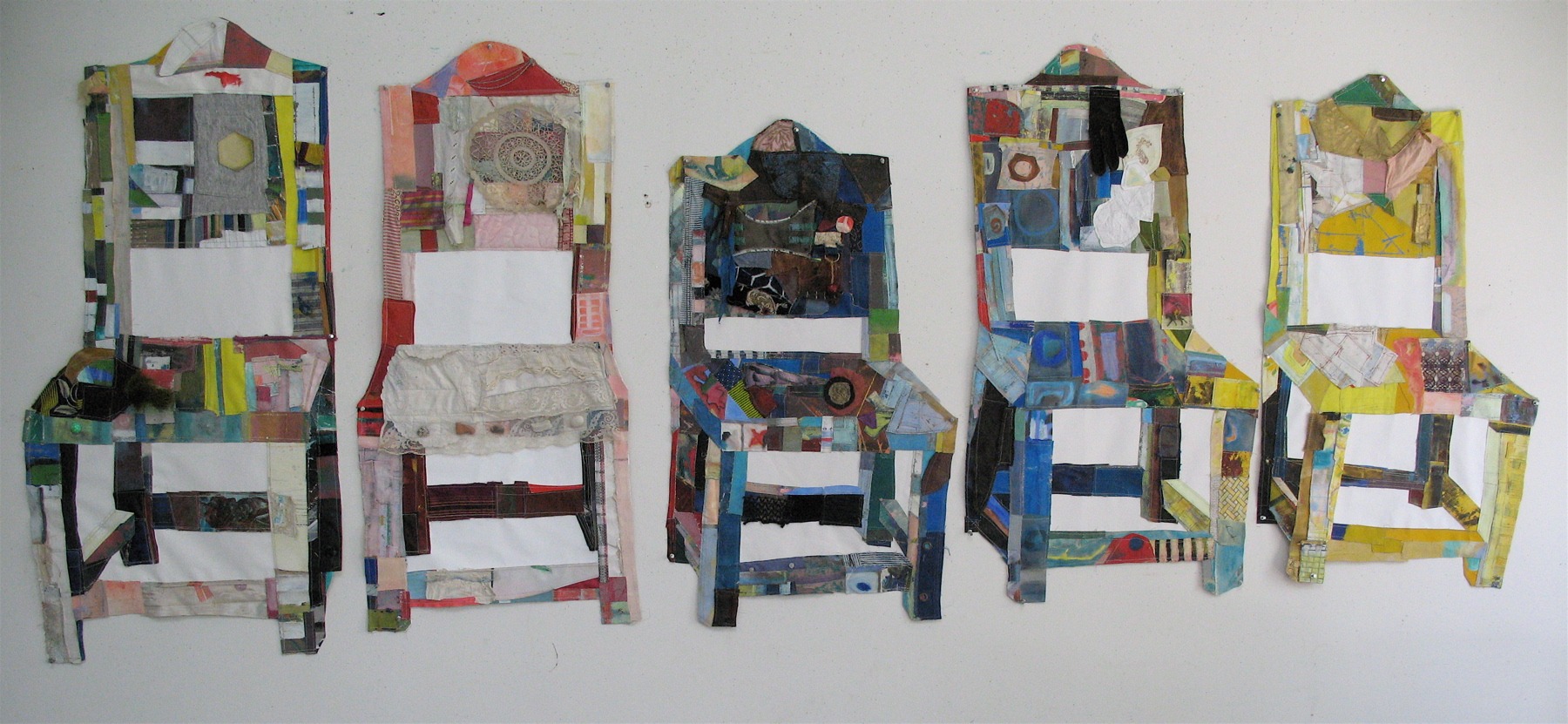
The texture of weavings
What was your route to becoming an artist?
I went to theatre school and ended up, for a short while in my twenties, as a theatre costume designer. Soon I realised I did not function all that well in a team. I did not like compromises. So I decided to become an artist on my own. Though I had no formal education in the arts, I am not quite self-taught either. I did many art-school courses (but no diploma) and artist friends taught and inspired me.
What is your chosen medium and what are the techniques you use to create your own special brand of textile inspired art?
I never saw myself as a textile artist per se, until recently, when people started reaching out to me under that heading. I was first a painter, then started to work with discarded objects, which is also how I view the textile fragments that I work with, as ‘discarded’ objects.
Many years ago, when I had reached a point of deep frustration with my oil paintings, I started to cut them up in strips, and then weave them back together. Then I was looking for a way to reproduce the texture of the ‘weavings’ and came to sewing pieces together.
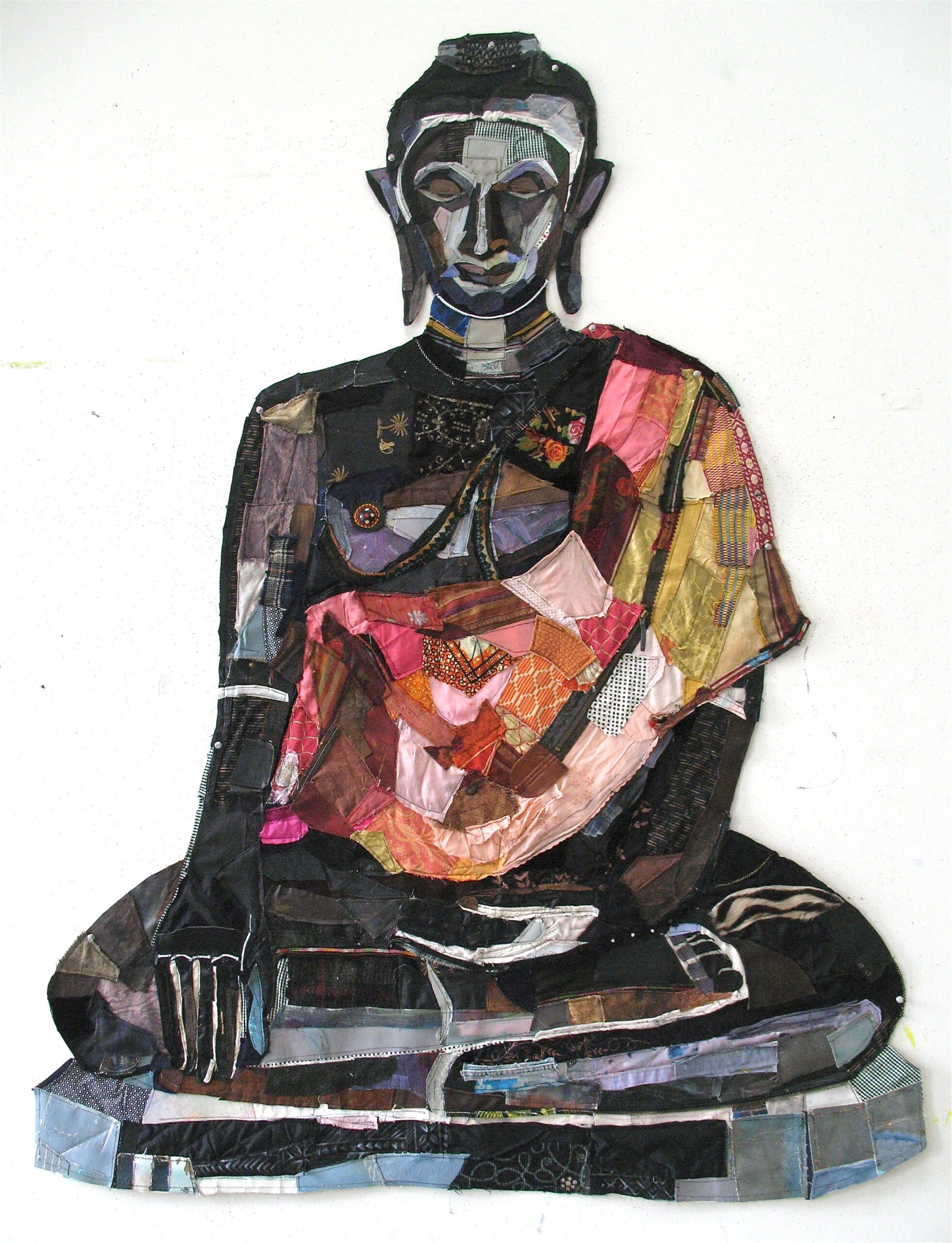
The floor as a palette
How would you describe your work and where do you think it fits within thesphere of contemporary art?
I flatter myself thinking that I do not fit in anywhere. Though I have noticed that ‘craft’ is more and more being introduced into mainstream or ‘high’ art. Recently though it seems I am being embraced by the textile art community. Though I still call my work ‘assemblages’.
Tell us a bit about your process and what environment you like to work in?
My current series ‘chairs’, ‘houses’, and a ‘Buddha’ that I just finished, are all based on photographs I took during my travels. When something speaks to me, spiritually, emotionally and aesthetically, I make a pattern on paper, based on the photograph. Then I sew with my giant vintage sewing machine directly on the pattern, which, when the work is finished, I remove and then I line the whole work with canvas.
The floor of my studio is my palette. I work very associatively, so it is important to be surrounded by large amounts of pieces of fabric, including fragments of old Moroccan leather bags, old lace, and so on and fragments of painted canvas, either from my own discarded paintings or donated by other artists, all of them already imbued with effort and meaning. I usually know in each finished work where each fragment originated from. It looks like chaos, but it is not. When it gets to that point, I categorise everything on colour, and start afresh.

Ethnic textiles inspire
What currently inspires you and which other artists do you admire and why?
The quilts of the community of Gee Bend. When I saw them in the Whitney Museum a couple of years ago I was ecstatic. And envious. Every piece of art is both quirky and manages to be ‘just right’: balanced just on the verge of unbalance. Mary Heilmann, Richard Tuttle, Martin Puryear, Raoul De Keyser, to name a few. And of course, ethnic textiles, from Africa and Asia.
How do you go about choosing where to show your work?
I look mostly online for juried shows or competitions to see where my work fits in. I recently got into quite a few shows that way. This year, I don’t know yet. A one person show? Any suggestions?
For more information please visit: ReinekeHollander.com
If you’d like to keep up to date with the artist interviews on TextileArtist.org why not follow us on Facebook, Twitter or Pinterest?
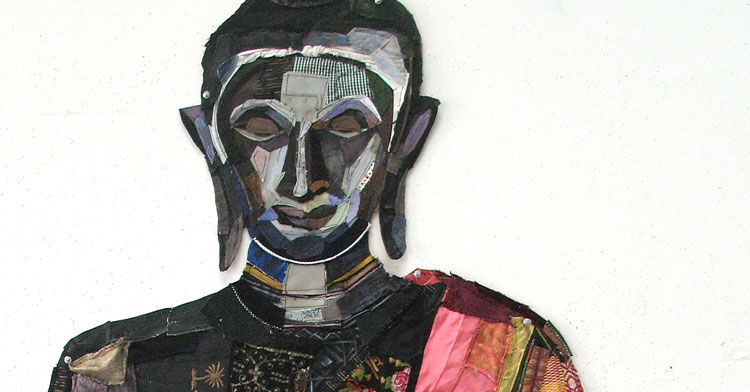
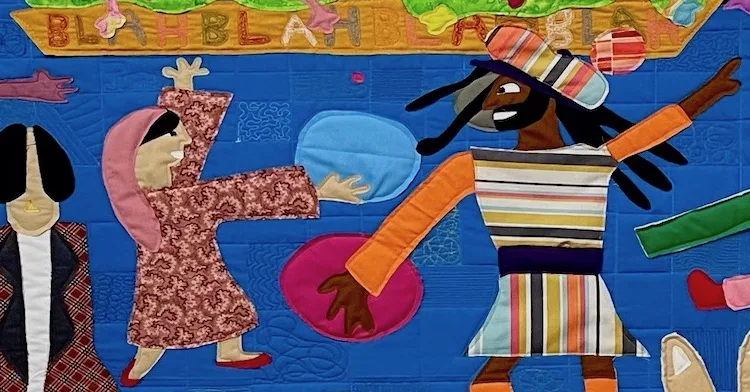
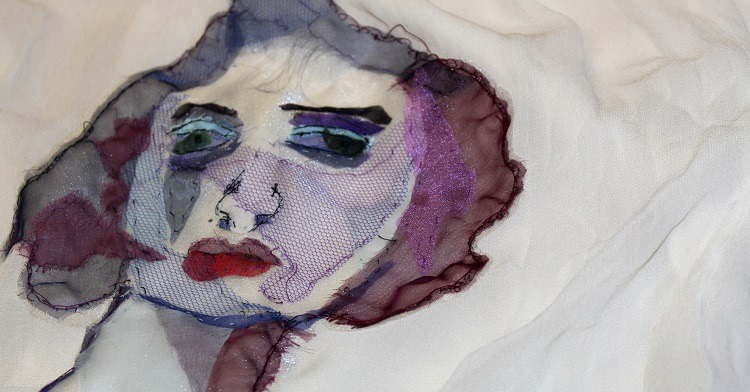
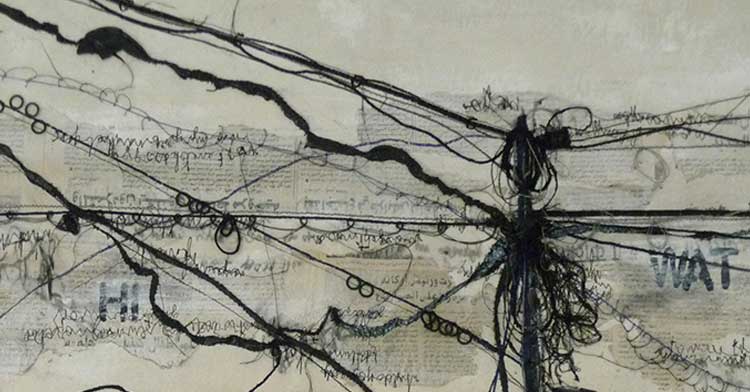
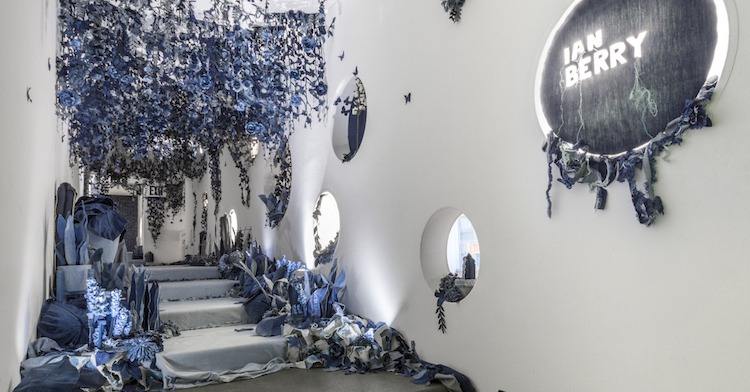
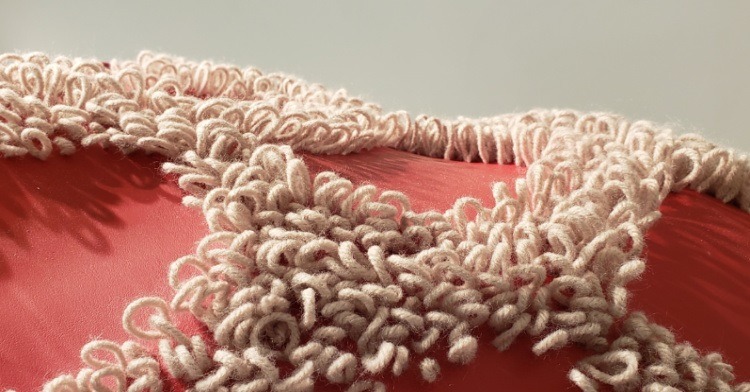
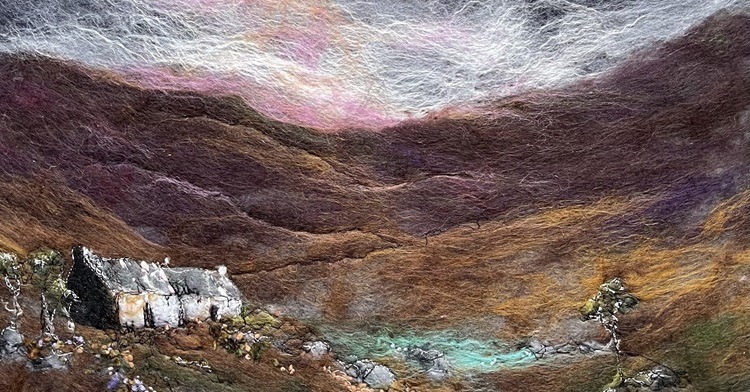
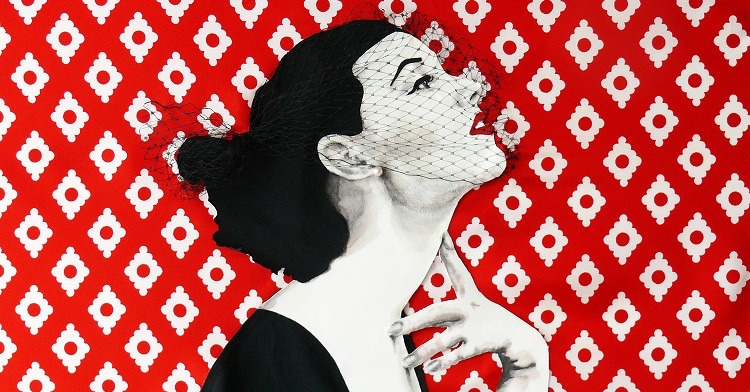
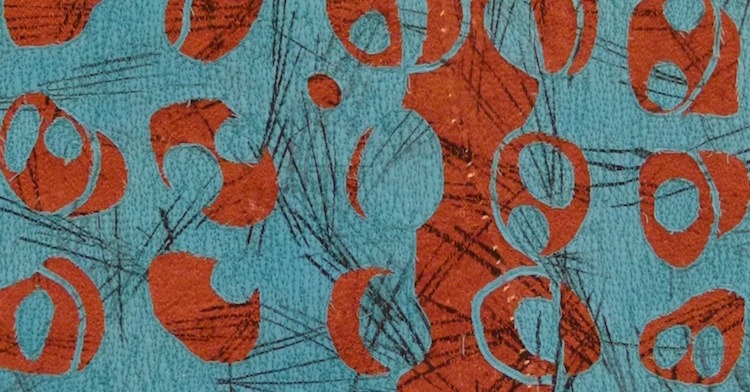
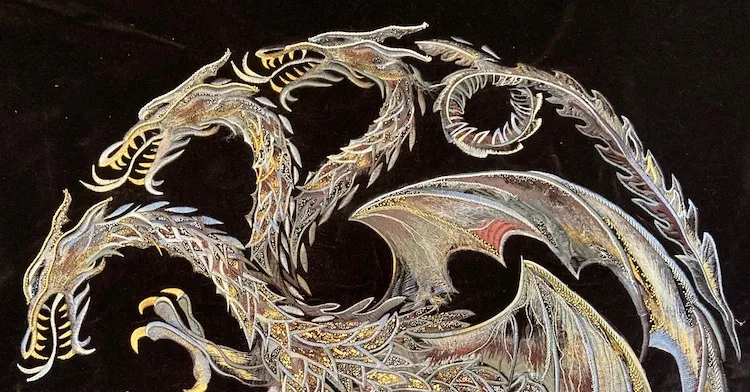
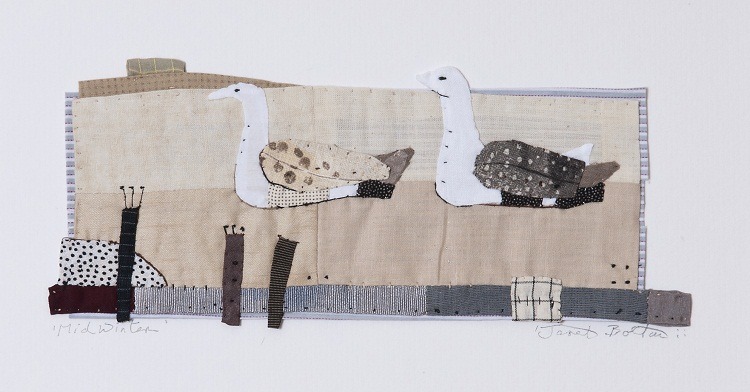
Comments